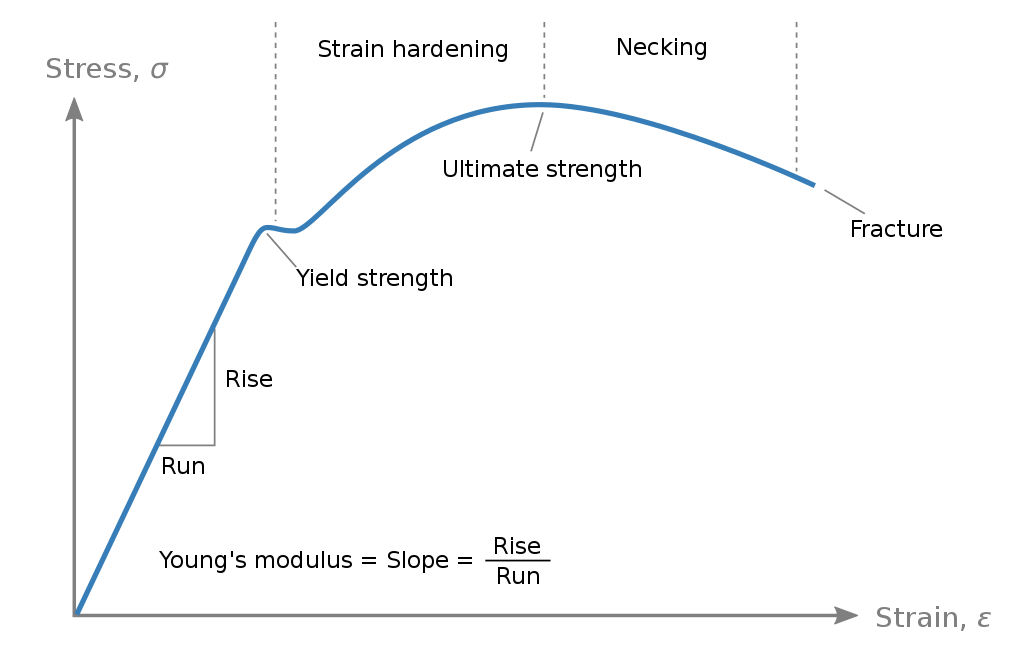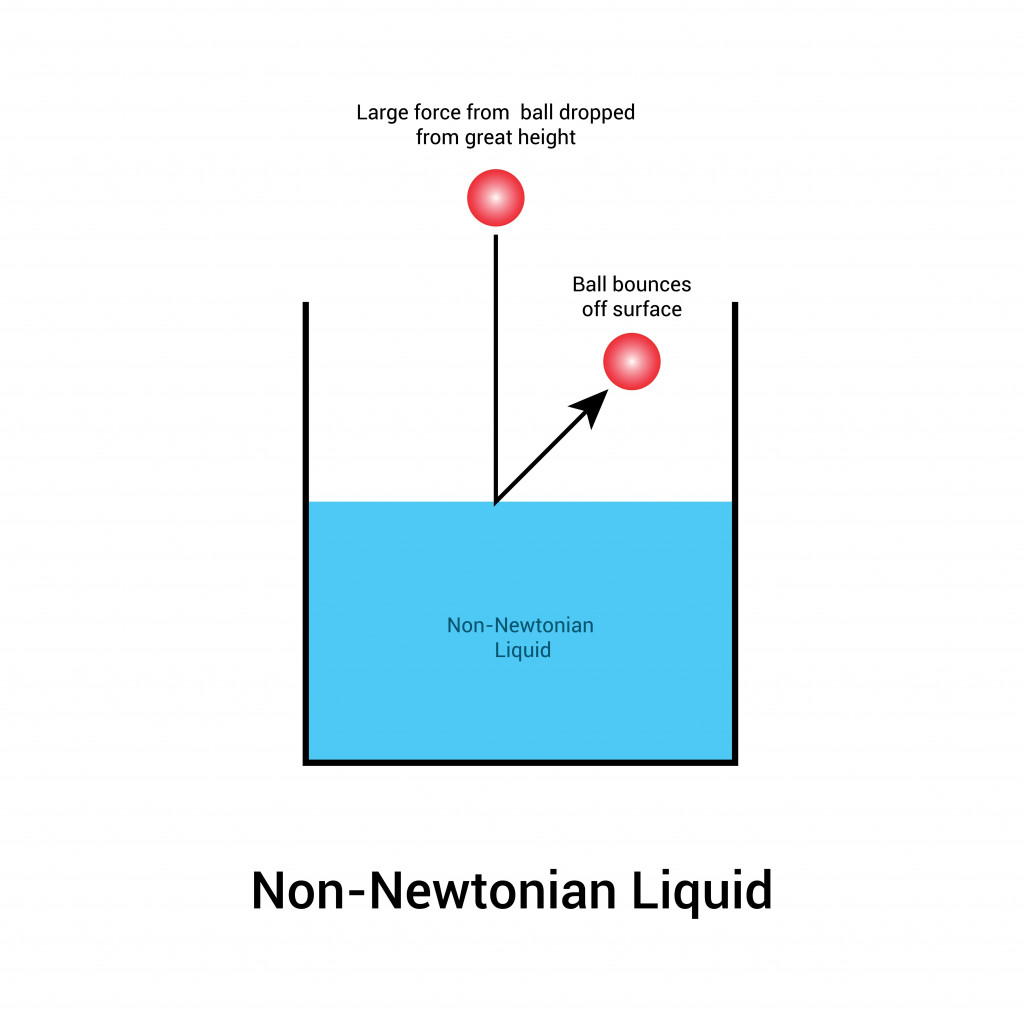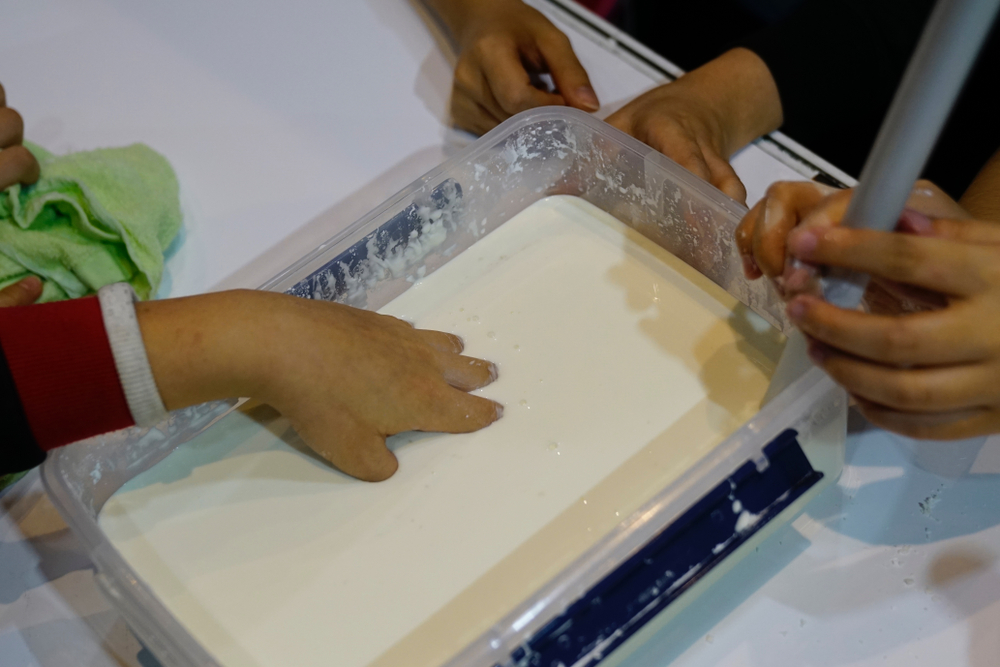The traditional rules of viscosity, known as Newton’s law of viscosity, are not followed by a Non-Newtonian Fluid. Therefore, it shows some unconventional behavior, meaning that you can actually run on a pool of Non-Newtonian Fluid.
While browsing through my social media, I saw videos of people walking and running over a liquid disguised as something quite normal. Those videos immediately caught my attention and got me curious.
After some searching around on the internet, I found an answer to my question. The secret to this viral trick is known as a Non-Newtonian Fluid. Let’s dig deeper into the science behind it!
Some Useful Terms Related To Fluid Dynamics
We first need to refresh ourselves on three terms before we can understand the significance of Non-Newtonian Fluids.
Viscosity: We know that water flows faster than honey, because the viscosity of water is less than that of honey. The viscosity of a fluid is the measure of the amount of resistance it provides to its own flow. It arises due to the relative motion between the different layers of the fluid. This determines how thick the fluid is and how fast it can flow.
Stress: Stress is defined as the force per unit area applied to a material. It is useful in determining fluid behavior.
Strain: Strain is an outcome of applied stress. It is the measure of the amount of deformation in the body, in the direction of the applied force, divided by its original dimensions.

Viscosity and the abnormal behavior of stress and strain within a Non-Newtonian Fluid are what set these apart from other fluids.
Also Read: Why Do Liquids Sometimes Run Down The Side Of The Container When They Are Poured Out?
Newton’s Law Of Viscosity
Newton’s Law of Viscosity is the defining factor for the characteristic behavior of fluids. It states that the shear stress is directly proportional to the velocity gradient between the two adjacent layers of the fluid.
Therefore, fluids that follow Newton’s law of viscosity are known as Newtonian fluids. The viscosity of these fluids remains constant, even under the application of stress. Common fluids like water, alcohol, and mineral oil fall under this category.
On the other hand, Non-Newtonian fluids got their name from the fact that they do not follow Newton’s law of viscosity. The viscosity of these fluids changes under the application of stress and shows abnormalities in their state of matter. Quicksand, ketchup, and paint fall under this category.

Also Read: Why Is Liquid Body Armor Better Than A Bulletproof Vest?
Is It Possible To Run On A Non-Newtonian Fluid?
Having defined the Non-Newtonian fluid, let’s try to understand how exactly it behaves and why.
Since viscosity is not constant for Non-Newtonian fluids, when stress (force) is applied to them, the state of the matter changes towards a temporary solid or liquid form. As soon as the stress is removed, the original state of matter is restored.
Imagine you have a container full of a Non-Newtonian Fluid that feels like a liquid. As soon as you punch the liquid and your hand touches the surface of it, the area of the liquid beneath your fist turns into a semi-solid. It returns to its original form as soon as the force is released. Interesting, right!?

For example, when your ketchup bottle is almost empty, you need to tap the bottom of the bottle to squirt the rest out, but why? Because ketchup is a type of Non-Newtonian fluid; when force is applied to it in the form of a tap at the bottom of its bottle, it turns into a more liquid consistency, and it can then flow out of the bottle more easily.
Similarly, when you exert pressure on a Non-Newtonian Fluid while running over it, the fluid just beneath your foot turns into a solid, allowing you to hold and move forward. Thus, YES you can run over a Non-Newtonian fluid, but you have to be a pretty fast runner and keep your steps light!

Interestingly, the exact molecular behavior of these fluids has not yet found a proper scientific definition or theory. Research has been underway to unveil this mystery for years now. What we know is only the tip of the iceberg.
Types Of Non-Newtonian Fluids
According to our present understanding of these fluids, Non-Newtonian fluids have been divided into four categories, as follows:
1) Dilatant
In this type, the viscosity of the fluid increases when stress is applied, but is time-independent. This means that viscosity will increase according to how much stress is applied, not for how long.
An example of Dilatant is Oobleck—a mixture of water and cornstarch. You might have seen people walking over Oobleck in videos, where at first it seems like a liquid, but as soon as you put your feet on it, it turns into a solid.
2) Psuedoplastic
This is the opposite of Dilatant. When stress is applied, it becomes less viscous, independent of time. An example of a Psuedoplastic is ketchup.

3) Rheopectic
This is similar to Dilatant, except for the fact that the increase in viscosity is time-dependent.
A common example is cream. When you first stir cream, nothing much happens, but if you keep stirring, the cream gradually thickens.
4) Thixotropic
This is the opposite of Rheopectic. When stress is applied, its viscosity decreases and is dependent on time.
Honey is an example of a Thixotropic fluid. If you stir honey for a long time, it gradually turns into a more liquid form.

A Recipe For Non-Newtonian Fluid
It’s always cool to gain knowledge about something interesting, but even cooler to put that knowledge into practical use. So let’s go ahead and try a recipe for Non-Newtonian fluid that we can easily make at home. Put on your gloves and lab coat!
CAUTION: No Expert Supervision is Required!
Things you’ll require:
1. Corn starch (about 1/4 cup)
2. Water (as much as required)
3. A bowl for mixing

Place a clean bowl on a table in your backyard. Add 1/4 cup of corn starch into the bowl and a small amount of water to make it wet. Slowly stir the mixture. Continue to add more water until the consistency of the mixture turns to that of liquid upon slow stirring.
Now, to check if the recipe is ready, tap on the mixture. It should feel like a solid! If it’s too liquidy, add more corn starch. Once the mixture reaches the desired consistency, it’s time to show it off to your family and friends. Put on a magic show where you turn a liquid into a solid with just a touch!
The Future Awaits
The unique properties of Non-Newtonian fluids can be put to various uses. They have the potential to be used as aerospace propellants because of improved control and safety. They can also be used to make armored bodysuits and spacesuits that can resist puncture or impact.
The industrial sector is also well on its way to exploiting the benefits of Non-Newtonian fluids.
Clearly, Non-Newtonian fluids are not just a cool concept or a science class experiment; they will likely play an important role in humanity’s future!

How well do you understand the article above!

References (click to expand)
- CHAPTER 3 THE CONCEPT OF VISCOSITY. Columbia University
- Eberhard, U., Seybold, H. J., Floriancic, M., Bertsch, P., Jiménez-Martínez, J., Andrade, J. S., Jr., & Holzner, M. (2019, May 30). Determination of the Effective Viscosity of Non-newtonian Fluids Flowing Through Porous Media. Frontiers in Physics. Frontiers Media SA.
- Non-Newtonian fluids - Science Learning Hub. sciencelearn.org.nz
- Chinyoka, T. (2021, April 24). Comparative Response of Newtonian and Non-Newtonian Fluids Subjected to Exothermic Reactions in Shear Flow. International Journal of Applied and Computational Mathematics. Springer Science and Business Media LLC.
- Chapter 3 Non-Newtonian fluid. Mustansiriyah University
- How to make a batch of non-Newtonian Oobleck | WIRED UK. Wired
